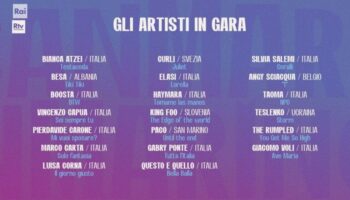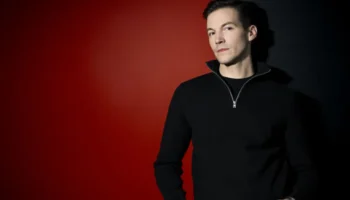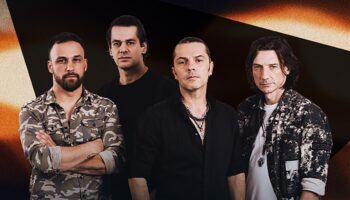A few days before leaving to represent Portugal in the first ever Eurovision Song Contest, Sonia Araujo spoke to Luis Florindo about her career and her hopes for the Eurovision Dance Contest.
Since you were a child your dream was to be a dancer. What is it that attractsyou to dancing?
It’s a sense of freedom and the possibility to "become" other people. Almost like an actor I can play different characters. Also the opportunity of expressing yourself with your body and being on stage is exciting. I love the rush of stepping on stage and communicating with people this way. Music also plays a large role because I just can’t live without music.
Did your parents support you in being a dancer when you were a girl?
Iwanted so muchto become a dancer that my parents just allowed me to follow my dream. Of course they were very supportive but onconditionI did well in school andbrought homegood grades.
You dedicated your teen years training to be a dancer in various dance schools. Can you tell us a about your dancing background?
I started in a dance and music academy in Oporto, my hometown, where I studied for four years. Then I carried on to a ballet academy where I did my training on classical ballet. At the end of every school year I had to undergo examinations carried out by teachers from the “Royal Academy of Dancing”. If I passed the test I had a Certificate from the Royal Academy. In those years I also had the opportunity of studying with several teachers from abroad, doing workshops on modern and jazz dance. I wanted to diversify my training.
The life of a dancer is very hard physically and psychologically. How did you manage to go to school and learn ballet at the same time?
The key word is discipline and I had to put a lot of effort into both things: studying and dancing. I went to school and had lessons in the morning and then went to the ballet academy in the afternoon. At the weekends I often had rehearsals for dancing shows.
In the beginning of your career you did classical ballets like “The Nutcracker” and “Swan Lake”. Do you think that doing these shows you learnt what dancing is all about?
I think that a background in classical ballet is important. It’s not fundamental to dance all the classics like the ones you mentioned, but if a dancer knows all the basic moves and the techniques of ballet, that will help in other areas of dancing.
Between 1992 and 1996 you participated in many TV shows where dancing was an important element of the shows. How was that experience for you?
I was part of several dancing ensembles that executed choreographies according to the theme of the show or to accompany a singer on stage. It was a very creative experience. In one of the shows, every week there was a different theme with new choreographies and new clothes.
In 1996 you started your career as a TV host at RTP’s morning show Praça da Alegria. How did that come about?
People at RTP already knew my work as a dancer and as an assistant of the host of other shows and they invited me to come to Praça da Alegria. I didn’t start as the co-host. At the beginning, my task was to introduce the guests and the musical acts of the show. It was a paced evolution. Then I started doing live and taped reports which taught me a lot of the craft. In 2002, with the arrival of the new male host, I gradually became more active in conducting the show.



